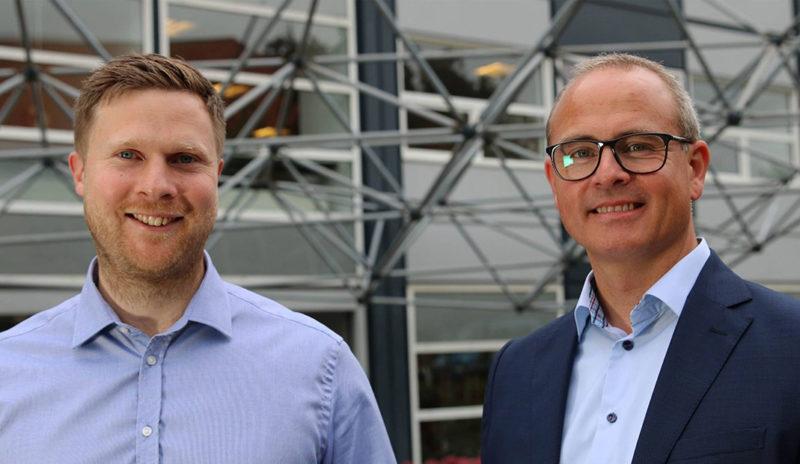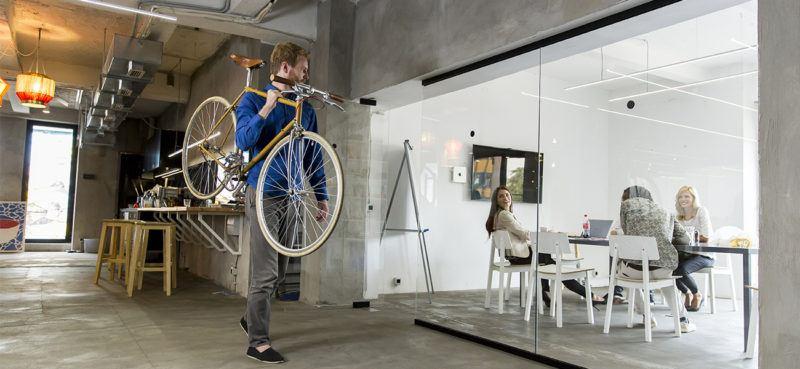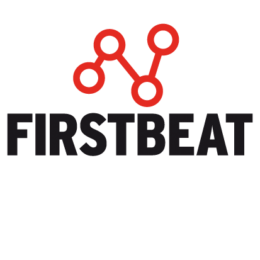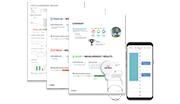
SQL Sentry Inc. from Huntersville NC, USA took part in a Firstbeat Lifestyle Assessment in October 2013 with 23 participants. This fall, the company wanted to offer the Lifestyle Assessment to its staff again to follow-up on the lifestyle changes.
“One year ago, all participants received their results and personal feedback and set goals to improve their well-being. The follow-up measurement allowed us to see how we had met these goals and the changes and possible progress that had taken place in a year,” comments the CEO and owner Greg Gonzalez.
The 3-day measurement, consisting of two work days and one day-off, was carried out in September, jointly between Firstbeat and its partner Renovo Advantage based in Greenville SC. A group feedback session was held by Firstbeat in mid-October, providing an opportunityto discuss and monitor the goals that people set the year before.
“People are busy and making lifestyle changes is not always easy, however, some very valuable insights, both subjective experiences and improved results could be seen among the individuals and as a group,” says Exercise Physiologist Tiina Hoffman.
Each participant discussed their assessment result and ways to improve their well-being with Hoffman and set concrete personal goals.
“The most common goals related to better time management and learning to include moments of recovery in one’s day,” states Hoffman.
“Most of us know the “should haves and could haves”, but seeing your result on an assessment report – how you are actually coping with your daily demands – promotes action.”
Increased Awareness of Recovery and Learning to Wind Down
When seeing the assessment results a year ago, some participants were concerned because their report included a lot of “red”, showing nothing but stress reactions from the time they got up in the morning to the time they went to bed, or even several hours into their sleep. Several of these individuals took a conscious effort to include some relaxing events in their days. The effort was verified by the group result: the percent of people showing poor recovery overall had dropped. The report image below shows an example of this. After a busy 10-hour workday and some errands after work, seeing almost an hour of green recovery in the evening before going to bed, while relaxing and reading, was a positive reminder – and affirmation – of the importance of winding down before going to sleep.

Several people who admittedly needed to improve their general fitness level, and showed not-so-great sleep in the initial assessment, had made an effort to improve their situation, and now witnessed improved sleep quality via a lower heart rate and increased heart rate variability, which suggests an improved fitness level and/or overall well-being. This could even be seen in the group result: poor quality of recovery (the lowest category) during sleep was present in 20% of all the assessment days in 2013 vs. only 9% in 2014.
New Insights about Exercise
The Firstbeat Lifestyle Assessment also impacted the physical activity habits of SQL’s personnel. The people who were physically inactive had made positive changes, by scheduling physical activity into their weekly program – or increasing the intensity of, for example, a casual walk to give their heart a proper workout. At the other end of the exercise spectrum, some of the very intensive exercisers had taken note, based on last year’s feedback, to include easier workouts in their weekly program.
“It is not only fitness development that suffers if you exercise too intensively and too often, it also affects your overall coping and ability to recover optimally. A good balance between hard and easy workouts provides the best results from many perspectives,” states Hoffman.
It goes without saying that running a half marathon is hard but seeing how much it affects the following night’s sleep really emphasizes the point. Rick Pittser, an avid long-distance runner, saw this concretely by wearing the monitor before, during and after his half-marathon. The graphs below show good recovery (green) the night before, but compromised recovery (red) the night after, even if the race was over by mid-morning. This is a natural response to maximal exercise, but emphasizes the need to take it easy for a few easy days.
“The data that I get from Firstbeat is very eye opening. This time it illustrated the toll that a half-marathon takes on my body. It is a great reminder to continue to include recovery as part of my training regimen,” Pittser comments.
SQL Sentry employees are involved in many different kinds of exercise and some interesting observations were made. For example, Scott Fallen was riding his motor bike on the race track most of the day and the intensity always approached his maximal capacity during the active bouts, with heart rate as high as 185.
“No wonder I felt like I had been through a marathon that day,” Fallen comments.

For Stephen Dyckes, being a soccer goalie in a masters’ game means more than just standing between the goal posts. He takes a big role in helping the defense, resulting in an interval-like workout during which his heart rate approaches the maximum level several times and the training effect is almost 4, with 30 minutes of VO2 max level training (see graph below). Last year, Stephen combined the soccer game with a high-intensity cardio workout later in the afternoon, and as a result, showed practically no recovery the following night. One of the discussion points was not to overdo high-intensity exercise. In this year’s assessment, the post-soccer game sleep looked a lot better because it was not followed by more hard exercise on the same day.
SQL’s HR Consultant Jenn Miller took part in the Firstbeat Lifestyle Assessment for the first time. Miller discovered that even being a soccer mom can be a workout. Jumping up and down and cheering her son’s team increased her heart rate enough to show up as exercise on the report. For Miller, the Lifestyle Assessment served as a reminder to improve her own fitness level, to be able to handle the demands of work and family life.
“I learned that I spend the majority of my days going non-stop and not recovering. When I was watching my son’s game, running up and down the field, the results actually showed up as physical activity. This also happened when I was working in the yard. It was nice to see that I am getting some benefit from the activities that I have worked into my busy life as a mom. Those were the part of my life I enjoy the most and they ended up being the part of my day that was giving my heart the biggest benefit as well.”
“This experience has made me more aware of the balance in my day and I do make more of an effort to take time to breathe and relax a little more mid-day. I am also working on finding a good yoga place to help me continue that progression. As a company, SQL Sentry may actually add onsite yoga as well,” Miller Commends. Gonzalez was content with the follow-up measurement.
“I was happy to see how many took the wellness advice into action, be it physical activity or better sleep. Improved well-being results in better coping at work and a healthier workforce. The Firstbeat Lifestyle Assessment is an invaluable tool to quantify each employee’s well-being and provide concrete advice for improving it.”
If you liked this article, you should subscribe to our mailing list
You might also be interested in

“The Firstbeat assessment is a good reminder of the importance of balancing the different parts of life.”
SentryOne from Huntersville, North Carolina underwent the Firstbeat Lifestyle Assessment for the third time this October. Here are the results.

The Role of a Follow-up Firstbeat Lifestyle Assessment in Achieving Behavior Change
Introducing a follow-up Firstbeat Lifestyle Assessment to your wellness program can help quantify, validate and embed behavior change in the long-term.

Want to Boost Your Productivity at Work? Here’s How Increasing Physical Activity Can Help
Introducing physical activity into your routine can improve multiple areas important for workplace productivity.

